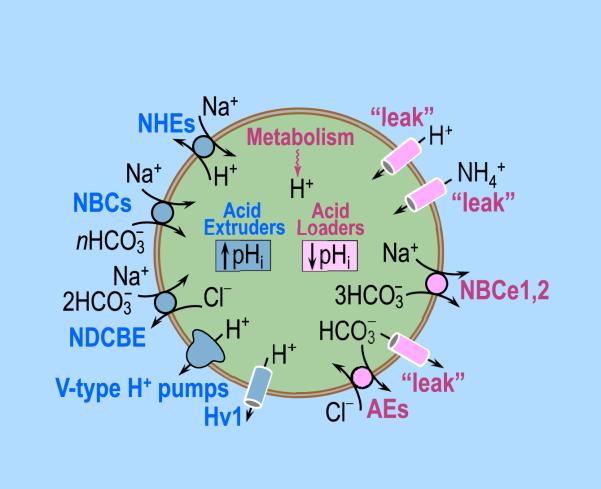Fig. 6.
A composite of acid extruders and acid loaders in a prototypical cell. Steady-state intracellular pH (pHi) depends on the balance between the rates of acid extruders and the rates of acid loaders. Acid extruders, listed on the left, are: (1) the Na–H exchangers (NHEs, members of the SLC9 family of solute carriers), (2) the electrogenic Na/HCO3 cotransporters (NBCe1, NBCe2 in the SLC4 family, n = 2), (3) the electroneutral Na/HCO3 cotransporters (NBCn1, NBCn2 in the SLC4 family, n 1), (4) the Na+-driven Cl–HCO3 exchanger (NDCBE in the SLC4 family), (5) V-type H+ pumps (fueled by ATP hydrolysis), and (6) the voltage-gated H+ channel (Hv1). Acid loaders, listed on the right, are: (1) passive fluxes (“leak”) of H+, BH+ (e.g., NH4+) and A− (e.g., HCO3− ), (2) the electrogenic Na/HCO3 cotransporter (NBCe1, NBCe2) operating with a 1:3 stoichiometry (i.e., n = 3), and (3) the Cl–HCO3 (or anion) exchangers (AE1 –3 in the SLC4 family). Additional acid loaders (not listed) are the proton-driven transporters.

